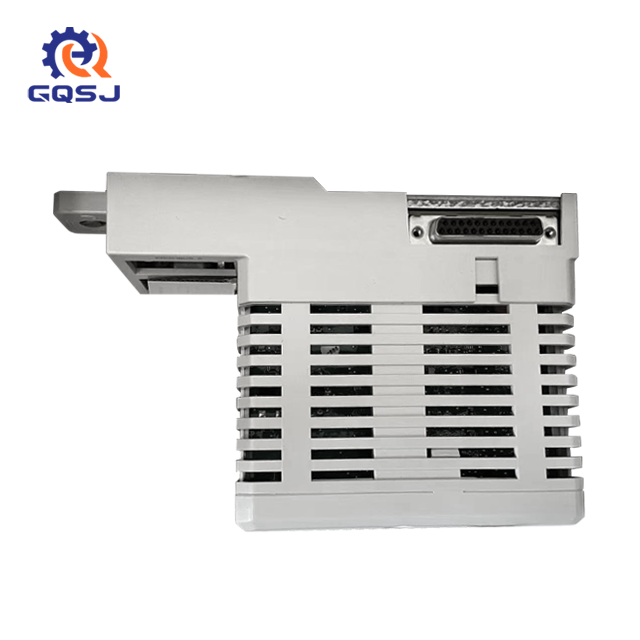Understanding AC 800M Communication Interfaces: A Complete Guide for Industrial Automation
Introduction
In the fast-moving world of industrial automation, communication is everything. A control system’s ability to exchange data reliably with field devices, supervisory systems, and peer controllers often determines the efficiency, safety, and maintainability of the entire plant.
ABB's AC 800M controller family is widely used in process industries, power generation, and discrete manufacturing. One of its strongest selling points is its versatile communication interfaces—capable of handling a wide variety of industrial protocols, integrating with diverse equipment, and adapting to both legacy and cutting-edge systems.
In this guide, I’ll walk you through the core types of AC 800M communication interfaces, explain the protocols they support, share real-world applications, and highlight best practices for designing robust communication setups.

1. Overview of AC 800M Communication Interfaces
The AC 800M is a modular PLC/DCS controller platform. Its communication capabilities come from two main sources: built-in ports and expansion communication modules. Here’s a breakdown of the most common types:
1.1 Ethernet Interfaces
Purpose**: High-speed data exchange between the controller, SCADA systems, engineering workstations, and other controllers.
Common Protocols**: **Ethernet/IP**, **Modbus TCP/IP**, and ABB-specific protocols.
Typical Uses**: Real-time process monitoring, SCADA integration, peer-to-peer PLC communication.
Advantages:
High data rate
Easy integration with modern IT/OT networks
Broad compatibility with third-party devices
1.2 Fieldbus Interfaces
Fieldbus networks connect controllers to distributed field devices—sensors, actuators, and intelligent instruments—over long distances with high reliability.
Supported Protocols: PROFIBUS-DP, PROFIBUS-PA, FOUNDATION Fieldbus.
Typical Uses**: Connecting AC 800M to smart transmitters, motor controllers, and valve positioners.
Advantages:
Robust in electrically noisy environments
Supports long cable runs
Multi-drop capability reduces wiring costs
1.3 Serial Interfaces
Purpose: Communication with legacy devices and certain low-speed equipment.
Types: RS-232, RS-485.
Typical Uses: Connecting older VFDs, weigh scales, or lab instruments.
Advantages:
Simple and low-cost
Still relevant in retrofit projects
1.4 Dedicated Communication Modules
AC 800M supports a variety of plug-in modules to expand its protocol support:
CI854A: PROFIBUS master/slave interface
CI853: Modbus RTU (RS-232/RS-485)
CI867: Ethernet/IP adapter/master
CI869: IEC 61850 for substation automation
These modules give system designers the freedom to adapt the controller to the exact communication requirements of the project.
2. Supported Communication Protocols in Detail
2.1 Ethernet/IP
Use Case: Fast, cyclic data exchange between PLCs, HMIs, and drives.
Industry Fit: Packaging, material handling, power plants.
Pros: High throughput, scalable, wide industry adoption.
2.2 Modbus TCP/IP
Use Case: Integration with a wide range of third-party equipment, from analyzers to meters.
Industry Fit: Process industries, utilities, building automation.
Pros: Open, simple, and highly compatible.
2.3 PROFIBUS-DP/PA
Use Case: High-reliability connection to distributed field devices in harsh environments.
Industry Fit: Oil & gas, chemical plants, pulp & paper.
Pros: Long cable lengths, multi-device network, proven stability.
2.4 FOUNDATION Fieldbus
Use Case: Digital communication with intelligent process instruments.
Industry Fit: Continuous process industries.
Pros: Advanced diagnostics, device-level control capabilities.
2.5 OPC
Use Case: Providing standardized data access for SCADA or MES systems.
Industry Fit: Cross-industry.
Pros: Protocol-agnostic access to real-time and historical data.
3. Selecting the Right Interface for Your Project
Choosing the correct AC 800M communication interface depends on several factors:
1. Field Device Compatibility – Match the interface to the protocols your devices support.
2. Data Rate Requirements – For high-speed control loops, Ethernet is often preferred.
3. System Integration Needs – Consider connections to other PLC brands or SCADA systems.
4. Environmental Conditions– Use fieldbus in noisy industrial environments.
5. Project Budget and Wiring Constraints – Factor in cost of cables, modules, and switches.
4. Real-World Application Examples
Example 1: Chemical Processing Plant
An AC 800M connects to dozens of field devices over PROFIBUS-DP, while Ethernet/IP links it to the SCADA system. This hybrid approach balances field-level robustness with high-speed data access.
Example 2: Power Generation Facility
A turbine control system uses Modbus TCP/IP to exchange operational parameters with AC 800M, while an IEC 61850 module (CI869) integrates it into the plant’s electrical substation automation system.
Example 3: Retrofit of an Old Manufacturing Line
An AC 800M equipped with a CI853 Modbus RTU module communicates with legacy drives over RS-485, preserving existing investments while enabling gradual modernization.
5. Best Practices for AC 800M Communication Setup
1. Plan Your Network Topology– Document device connections and IP addresses.
2. Use Redundancy for Critical Paths– Consider dual modules or redundant network switches.
3. Standardize Protocols Where Possible– Reduces configuration complexity and spares inventory.
4. Implement Proper Shielding and Grounding– Essential for PROFIBUS and serial networks.
5. Leverage Diagnostics– Use ABB’s Control Builder M and OPC monitoring tools to detect communication issues early.
Conclusion
The AC 800M communication interfaces are designed to meet the demands of modern industrial automation—flexible enough to integrate with legacy systems, yet powerful enough for advanced network architectures.
By understanding the available interfaces, supported protocols, and best practices, automation engineers can design systems that are reliable, scalable, and future-proof. Whether you’re working on a greenfield plant or upgrading an existing facility, choosing the right communication setup for AC 800M is a foundational step toward operational excellence.



